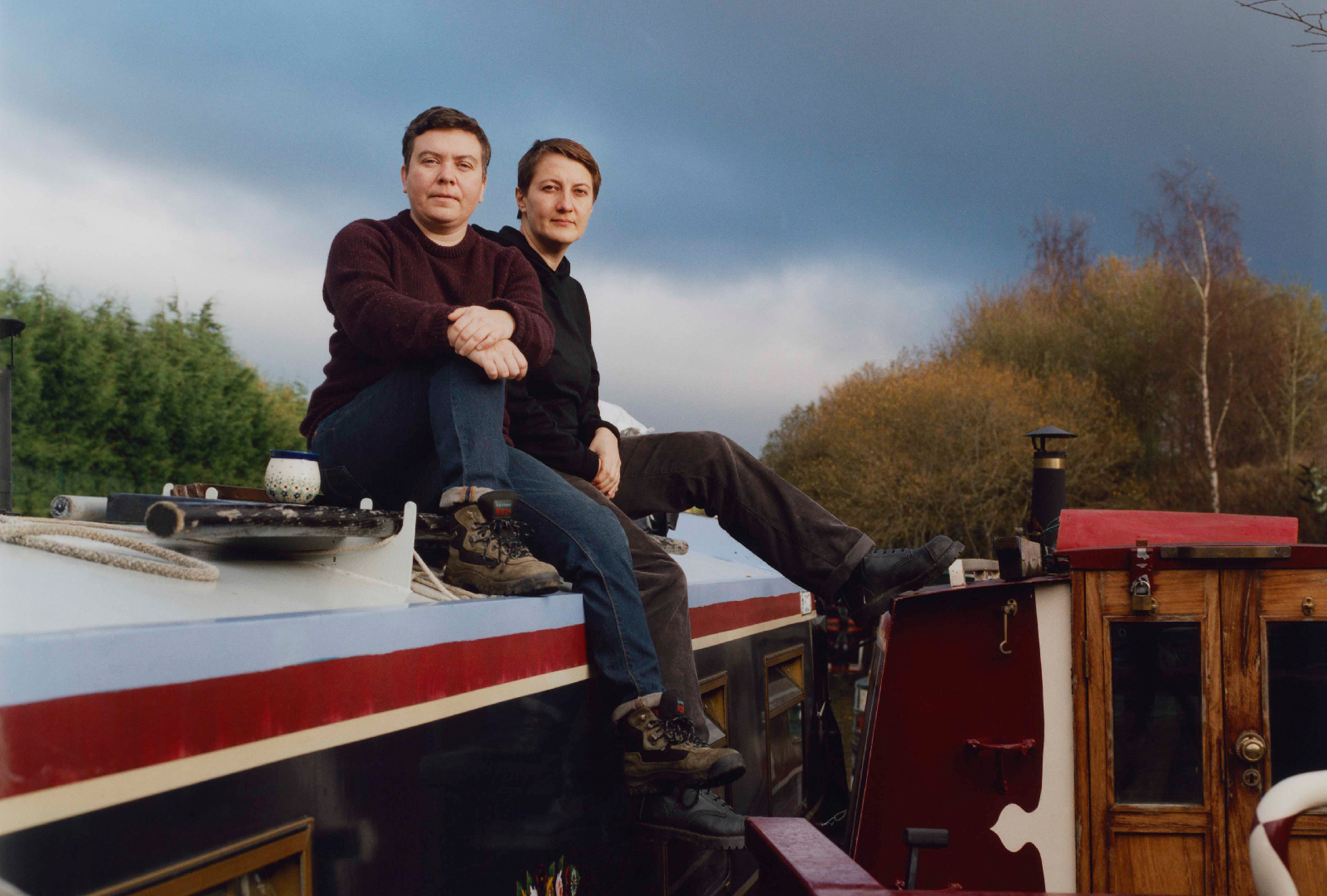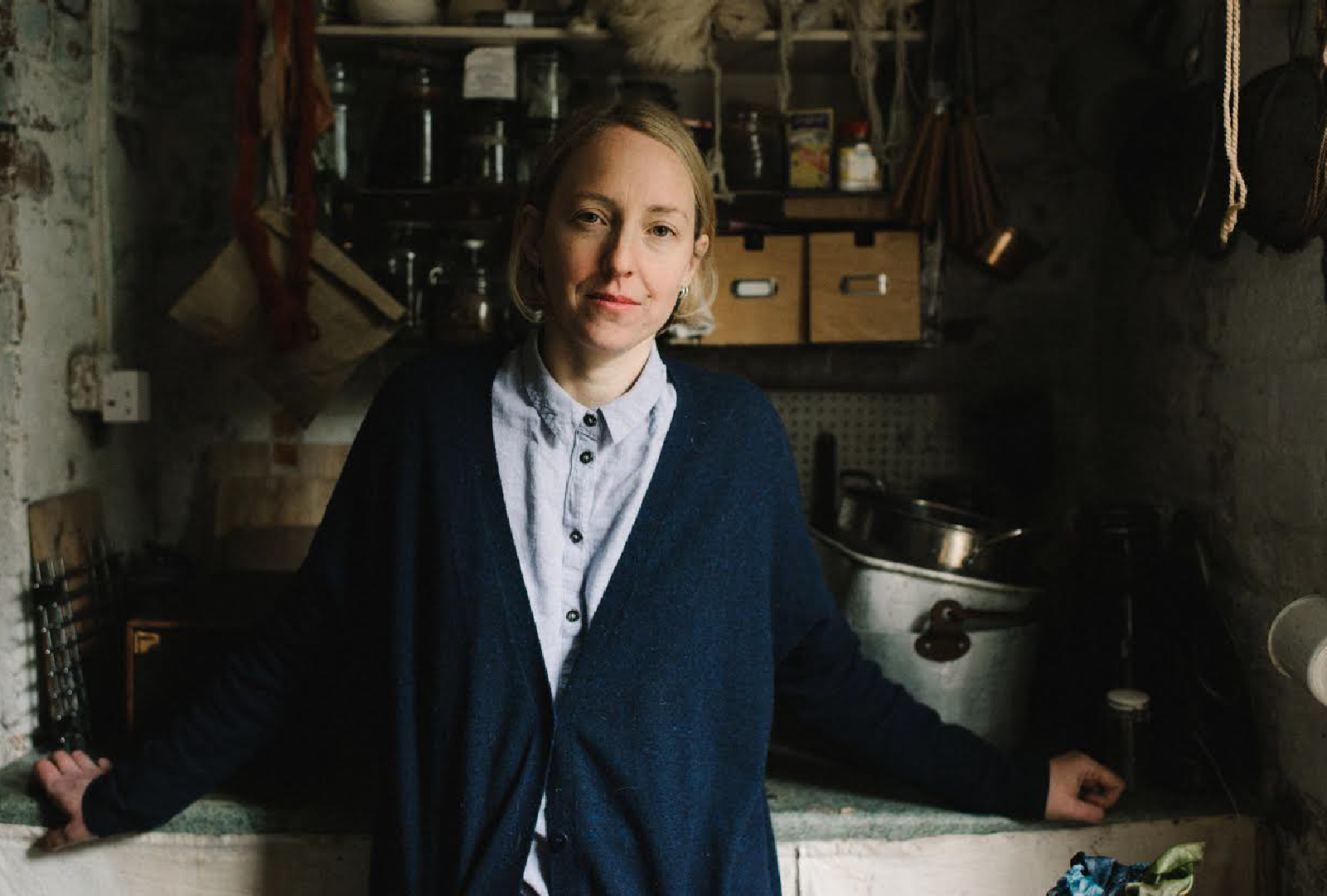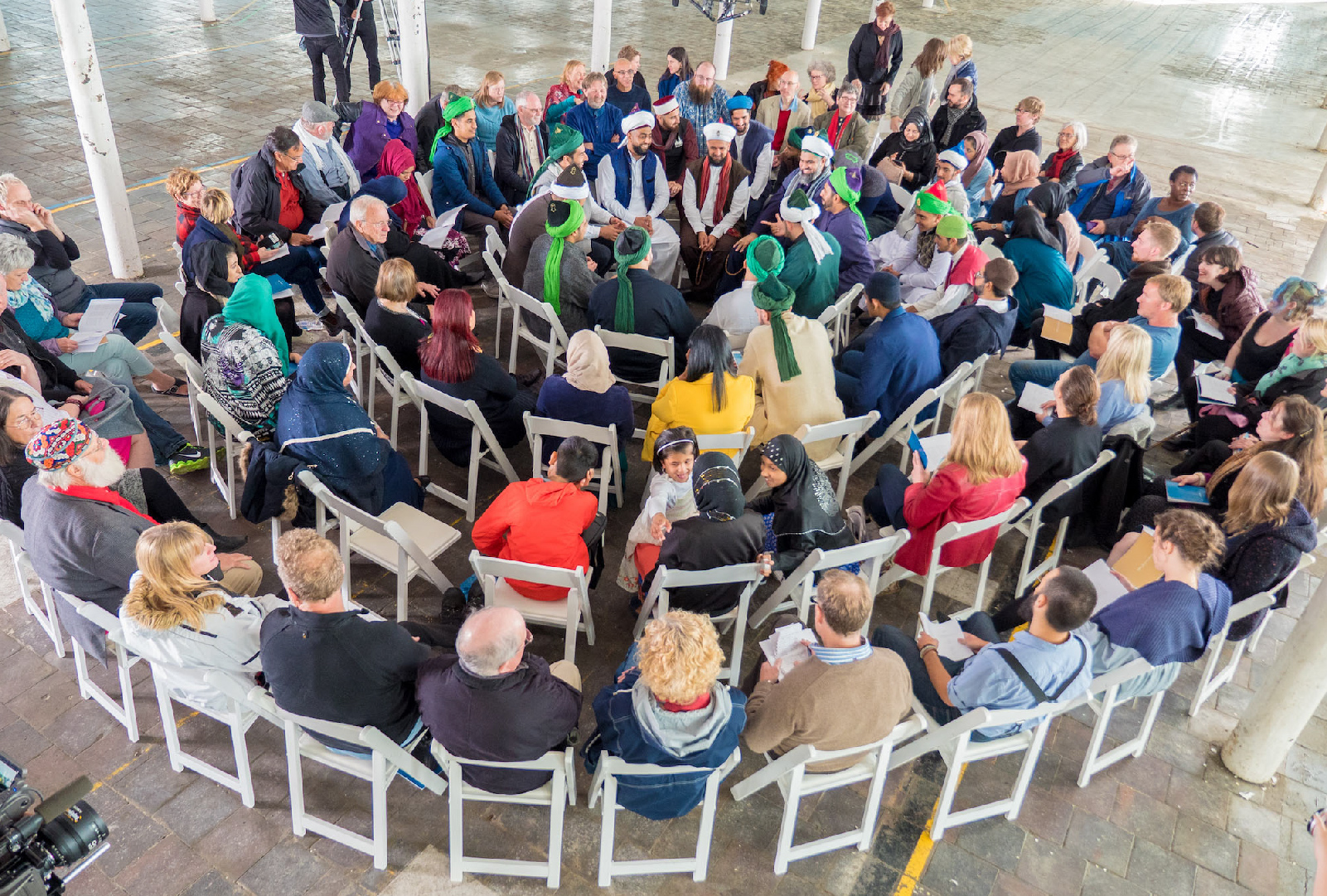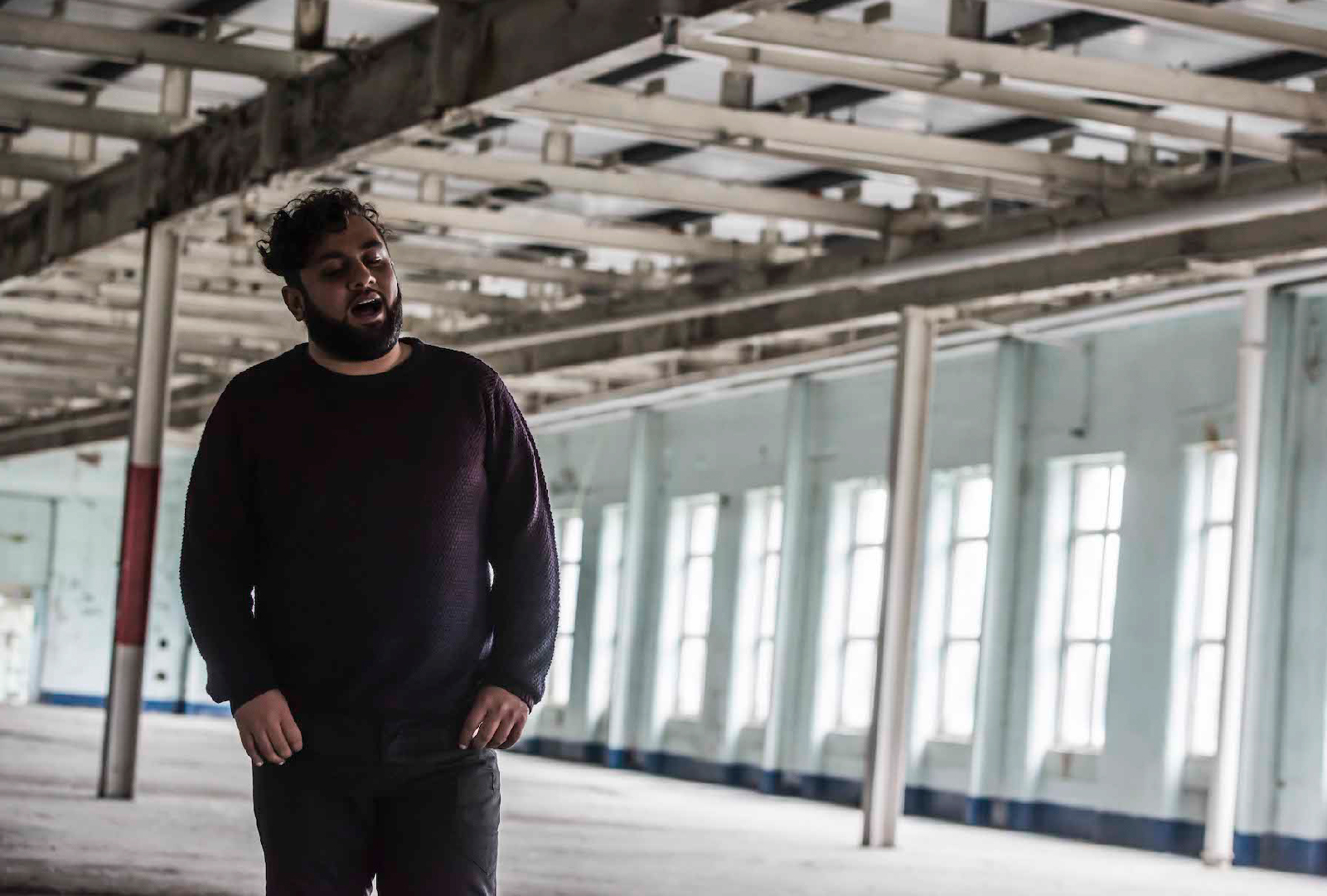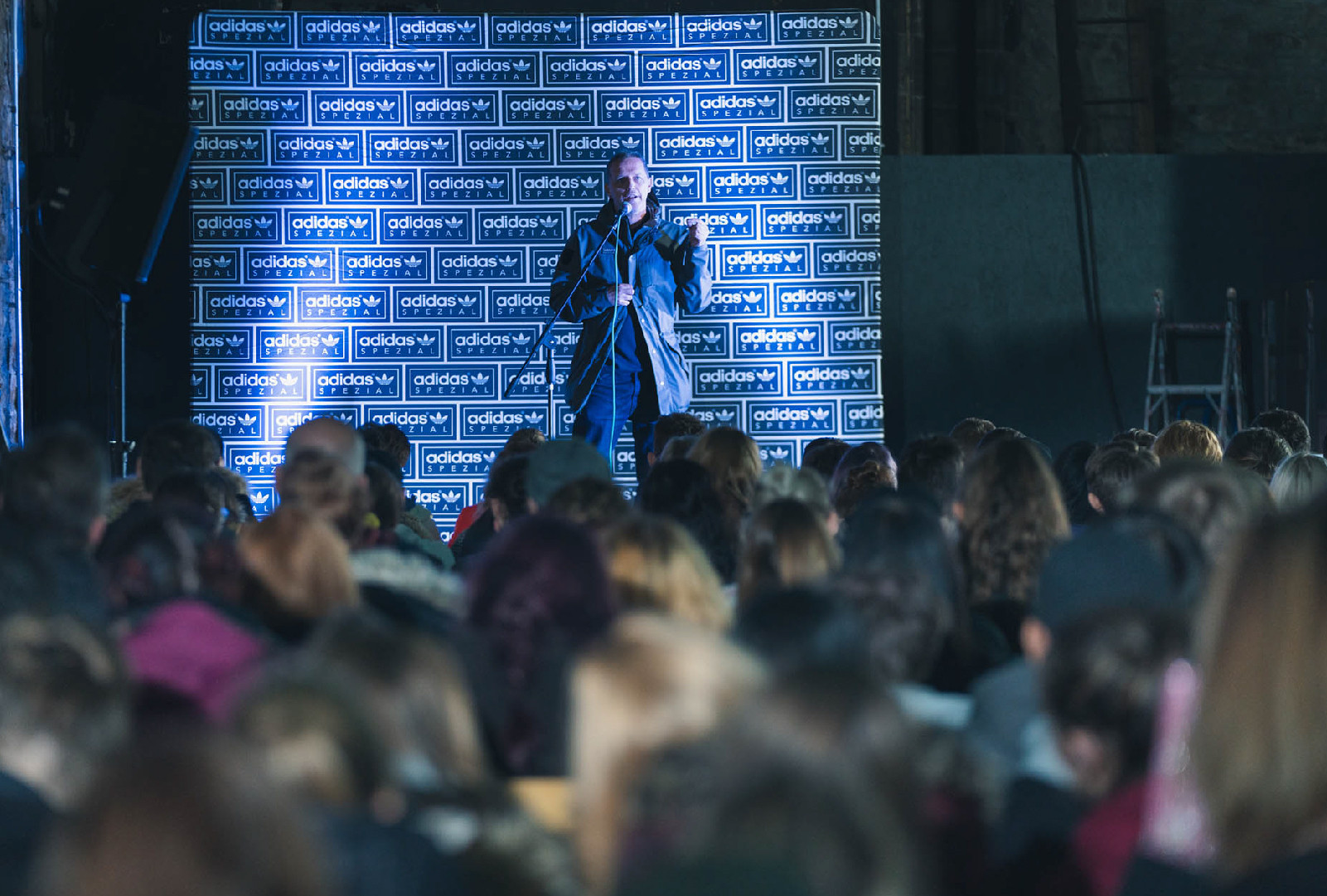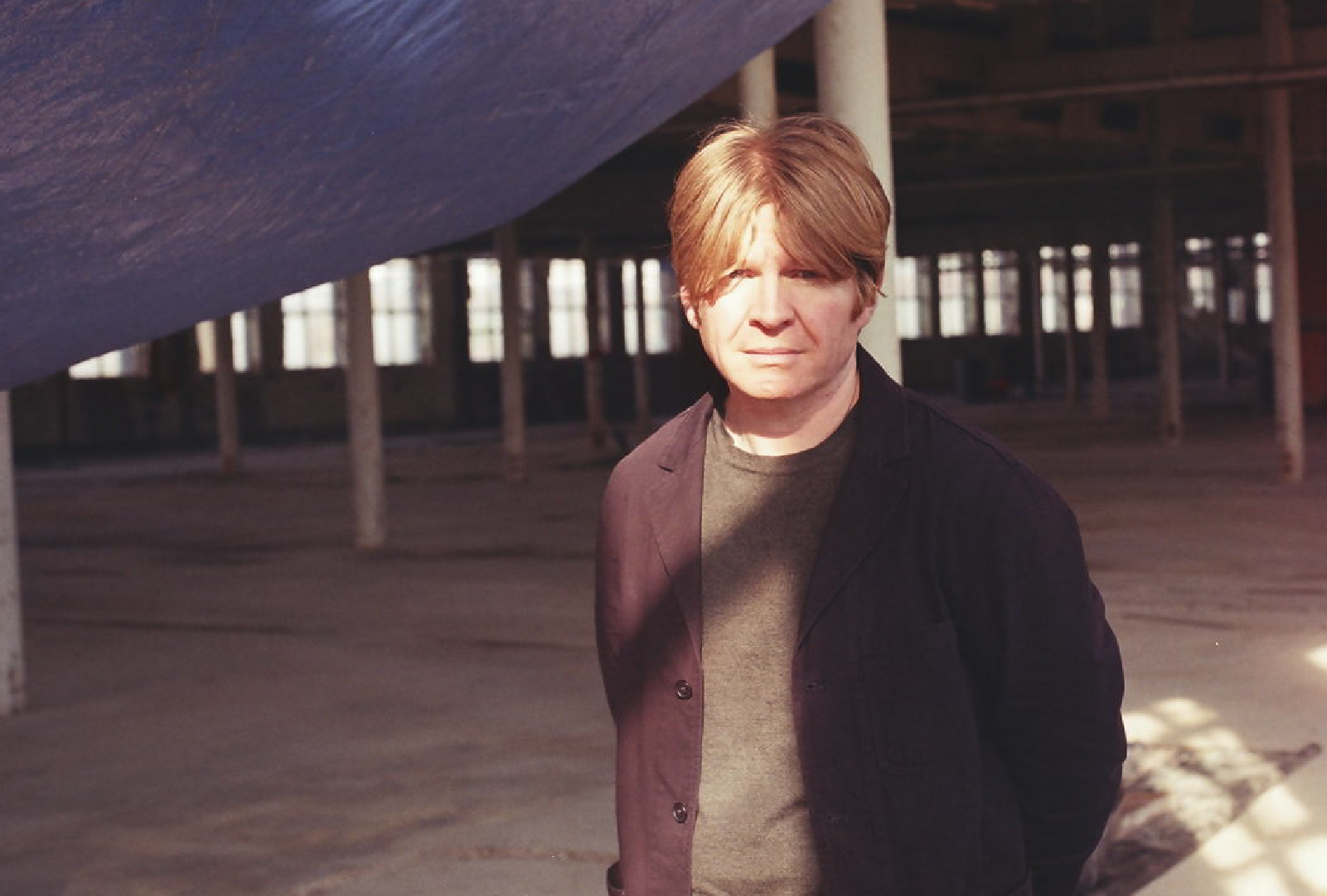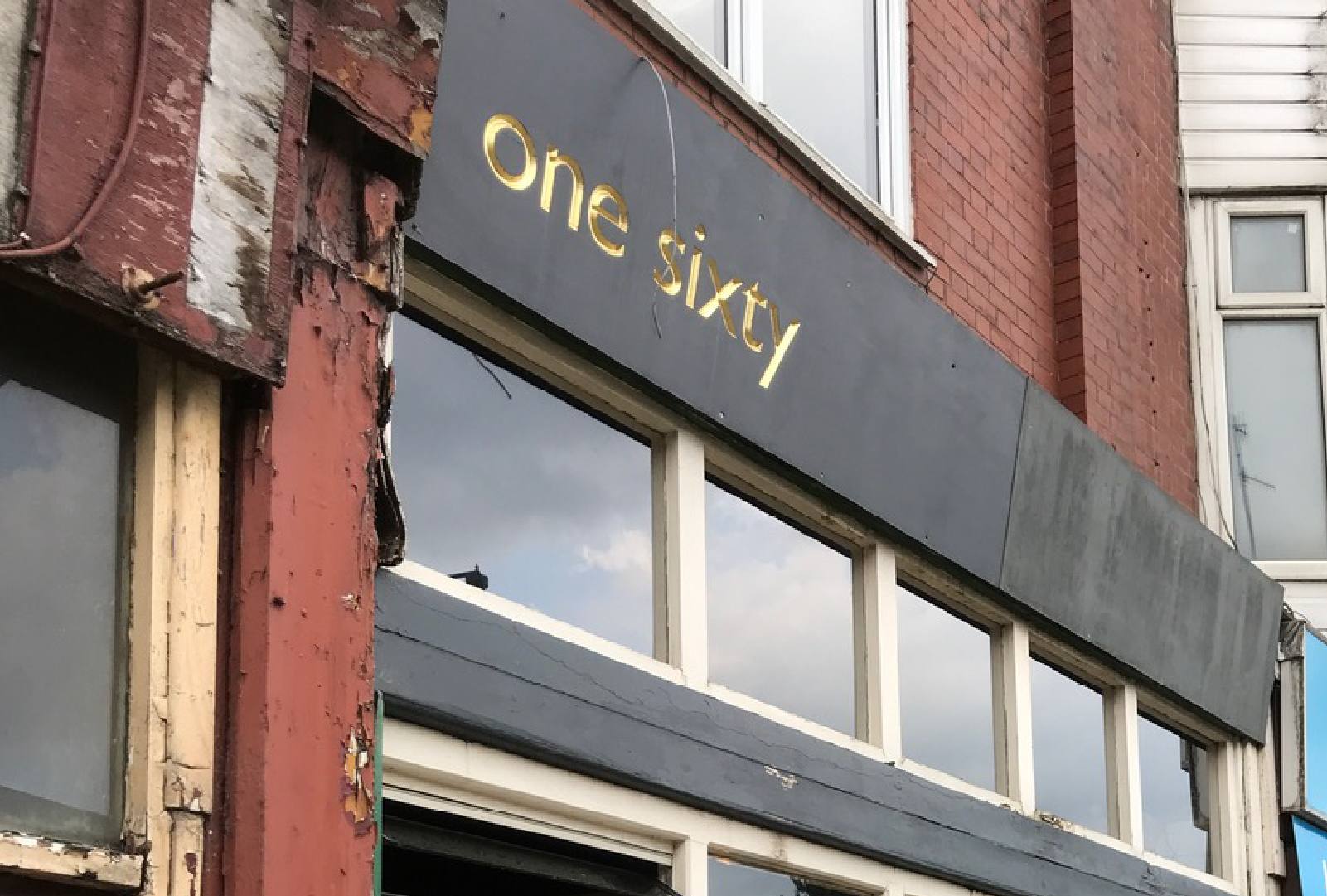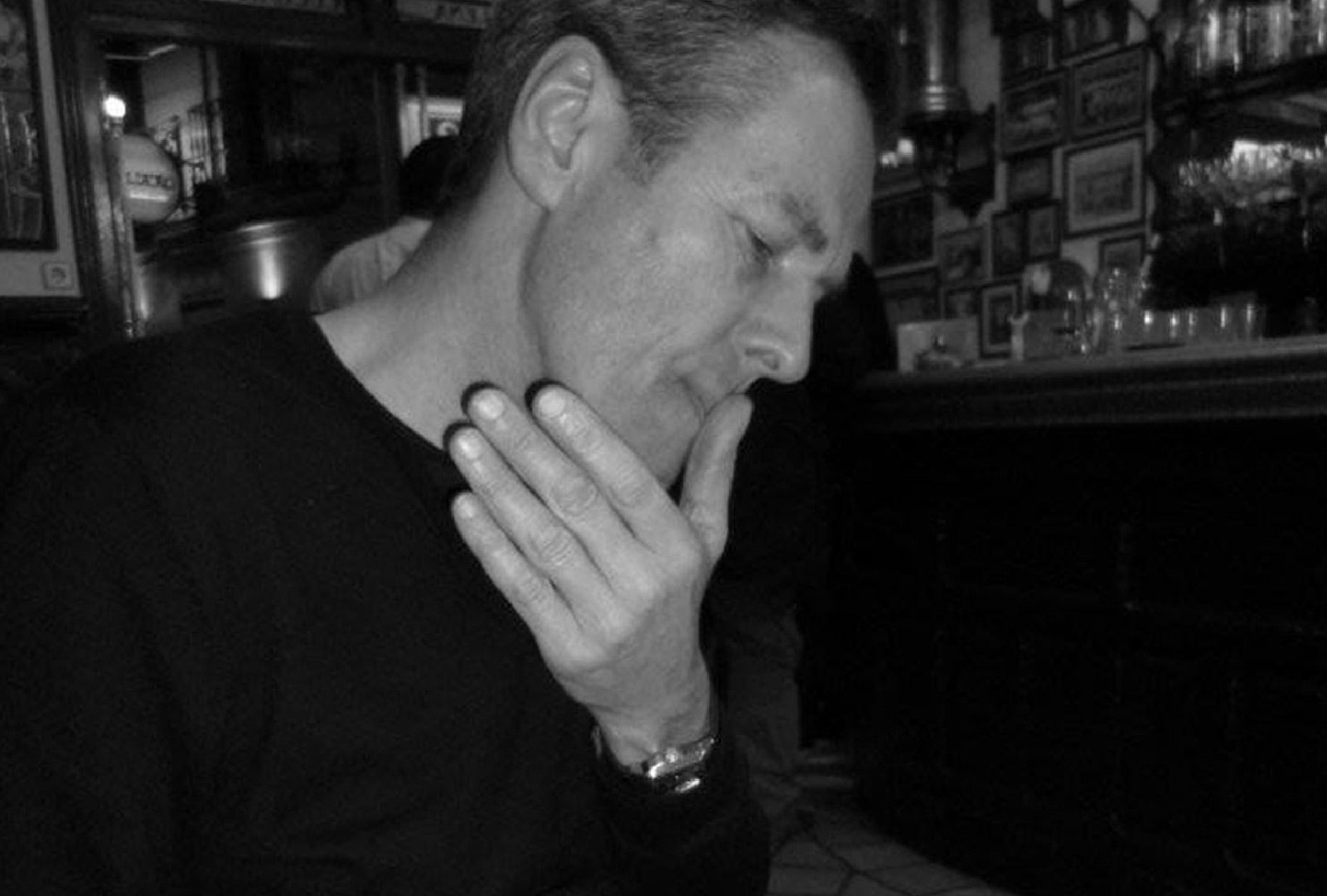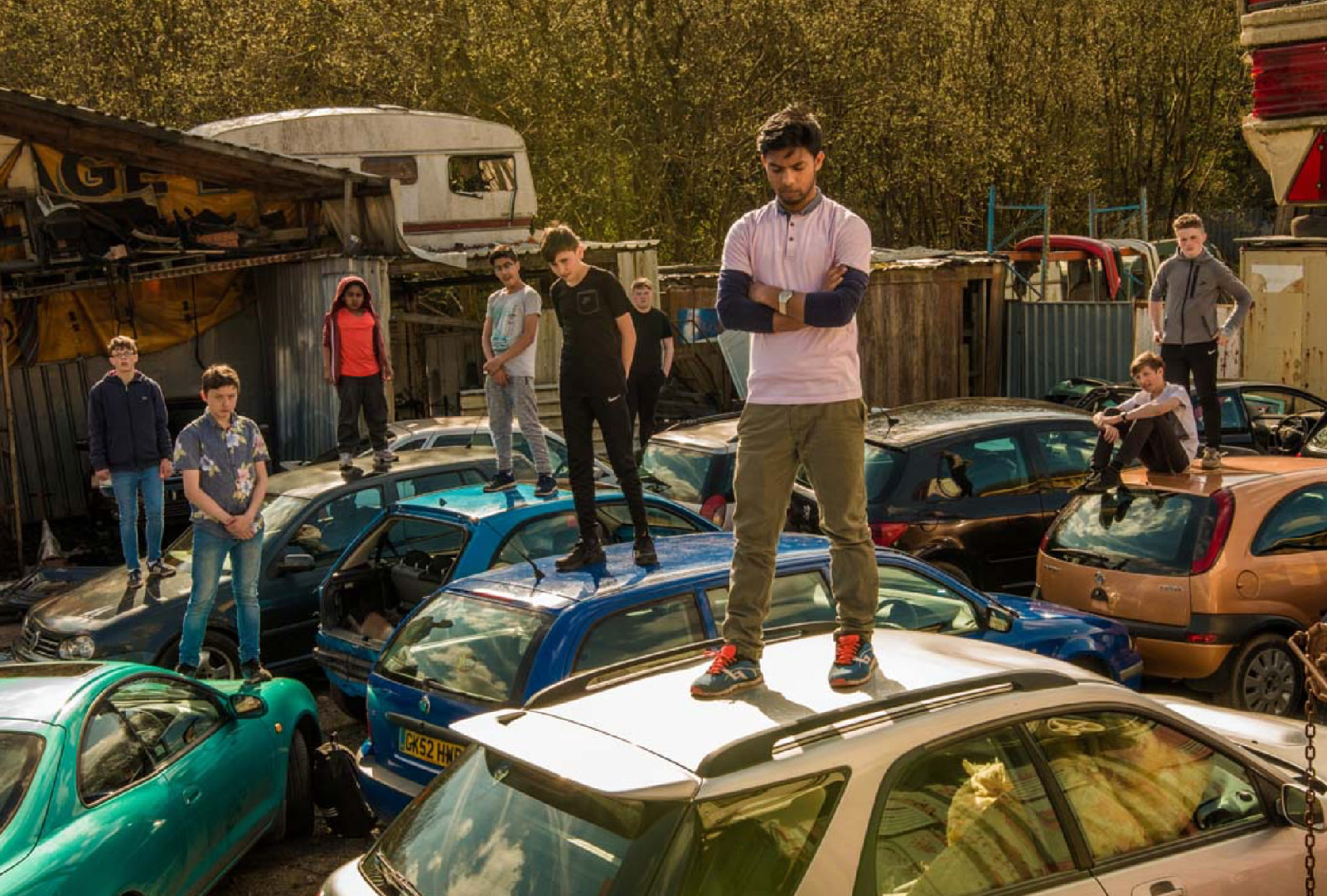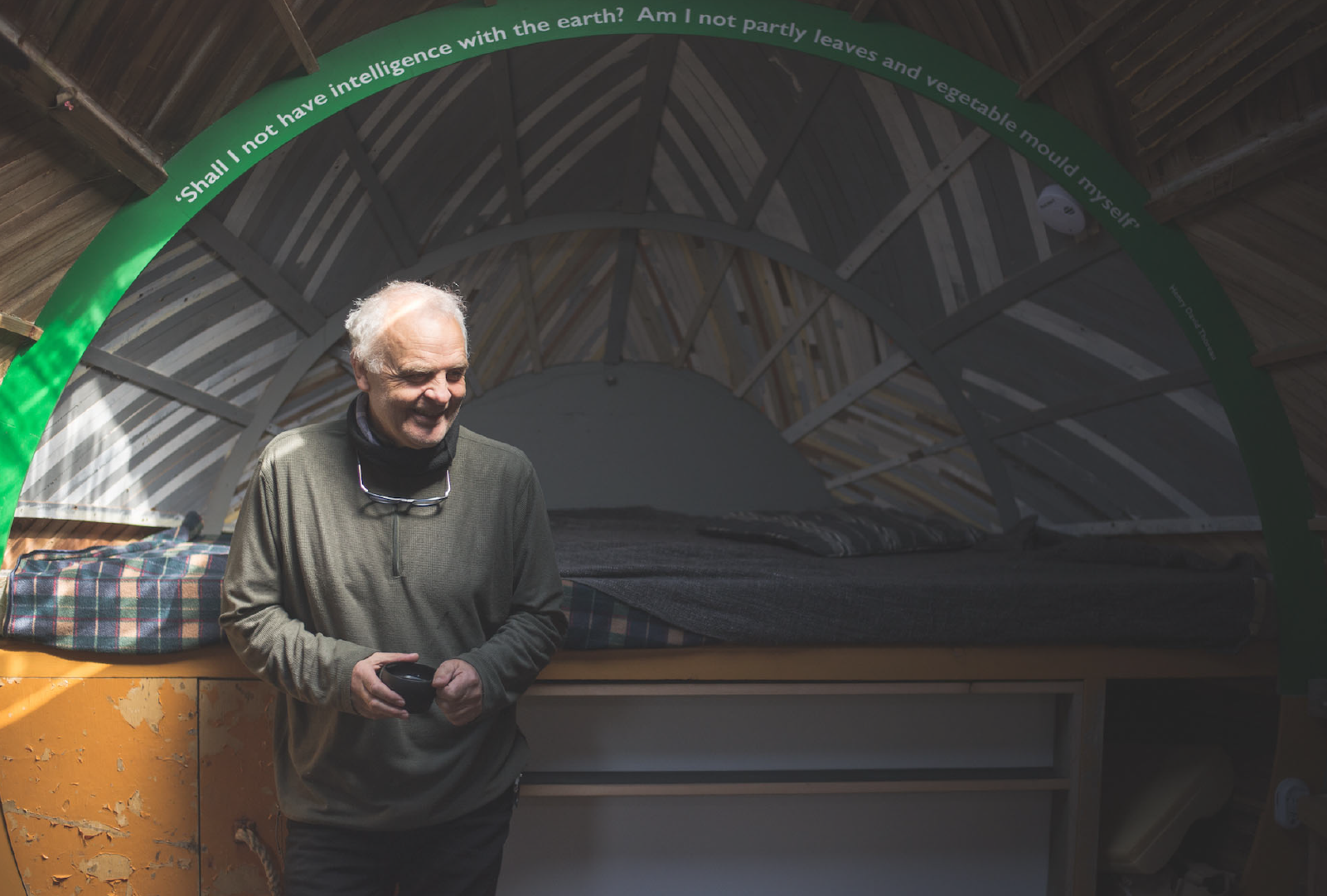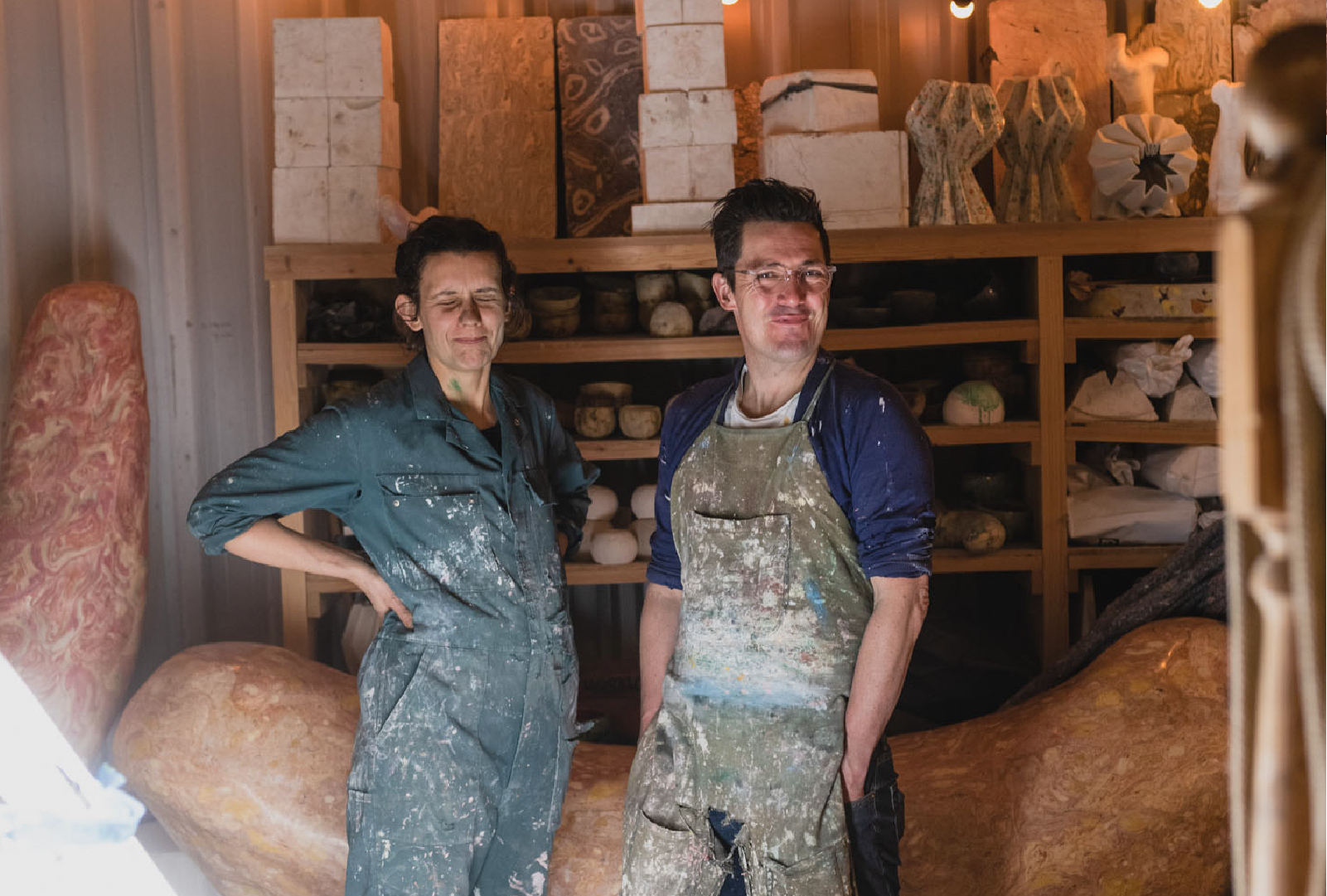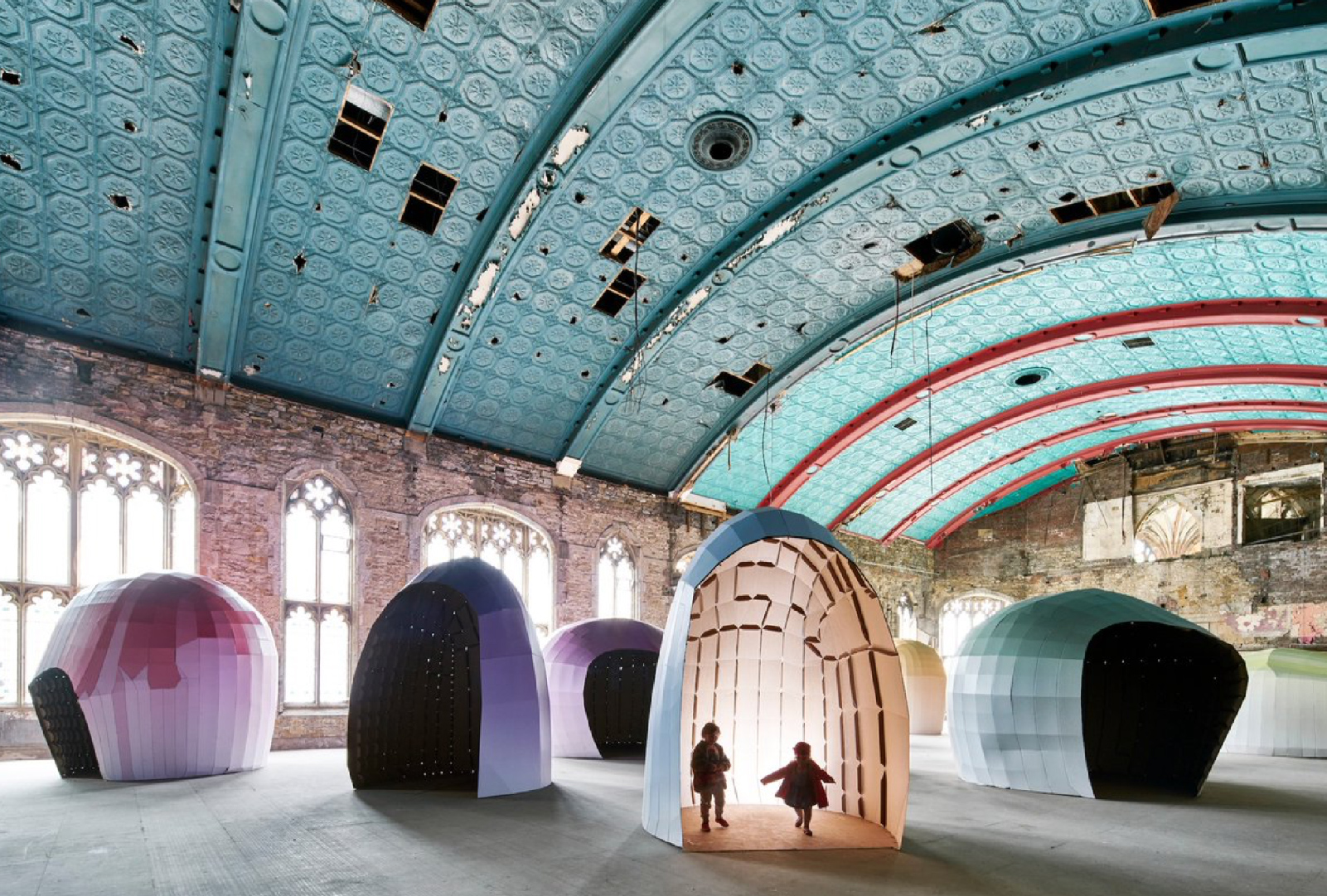MUCH MORE
THAN
MAKING DO
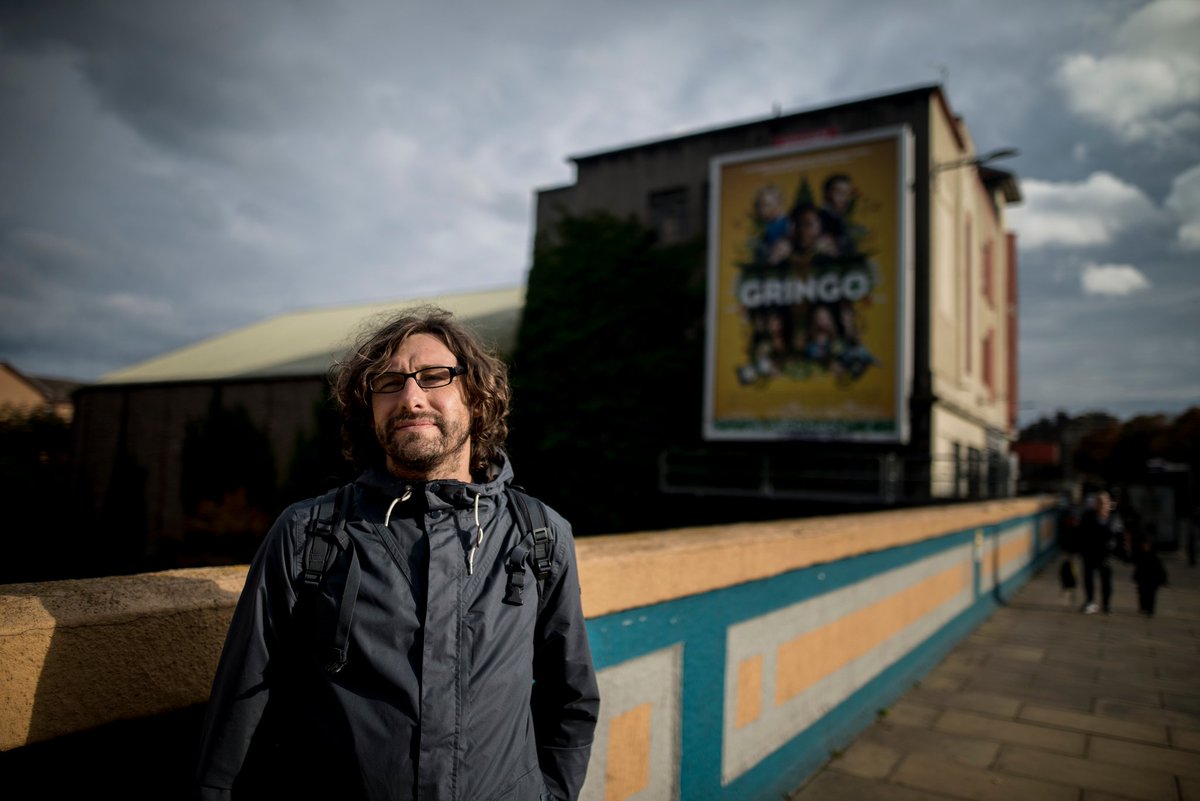
Photograph Steven Reynolds, 2019
BY STEPHEN PRITCHARD
Stephen Pritchard is an independent academic, researcher, community artist, activist, art historian, writer, curator, critical friend and filmmaker. He is co-organiser of the Movement for Cultural Democracy and co-founder of Art Not Arms, Artists Against Social Cleansing and the Socially Engaged and Participatory Arts Network.

Creative People and Places has shackled itself to a notion of “place” as an area on a map. An area in which people are said to have “low levels of arts engagement”.1 This is a revealing turn of phrase that is often fleshed out by attempts to explain that these areas of supposedly low cultural engagement are places in which “evidence shows that people are less involved in arts and cultural activities than elsewhere in England” because they “have traditionally had fewer opportunities to get involved with the arts”.2 These statements are repeated ad infinitum. The belief is that “brilliant art experiences” can somehow bring communities together. The ongoing Coronavirus pandemic has and will continue to change everything. There is no going back. Brilliant art experiences aren’t enough anymore. Art is not in itself magical. Is a focus on audiences and participants having a great time watching or doing some surprisingly high-quality art all there is to it? Will that be enough when communities and individual lives have been devastated?
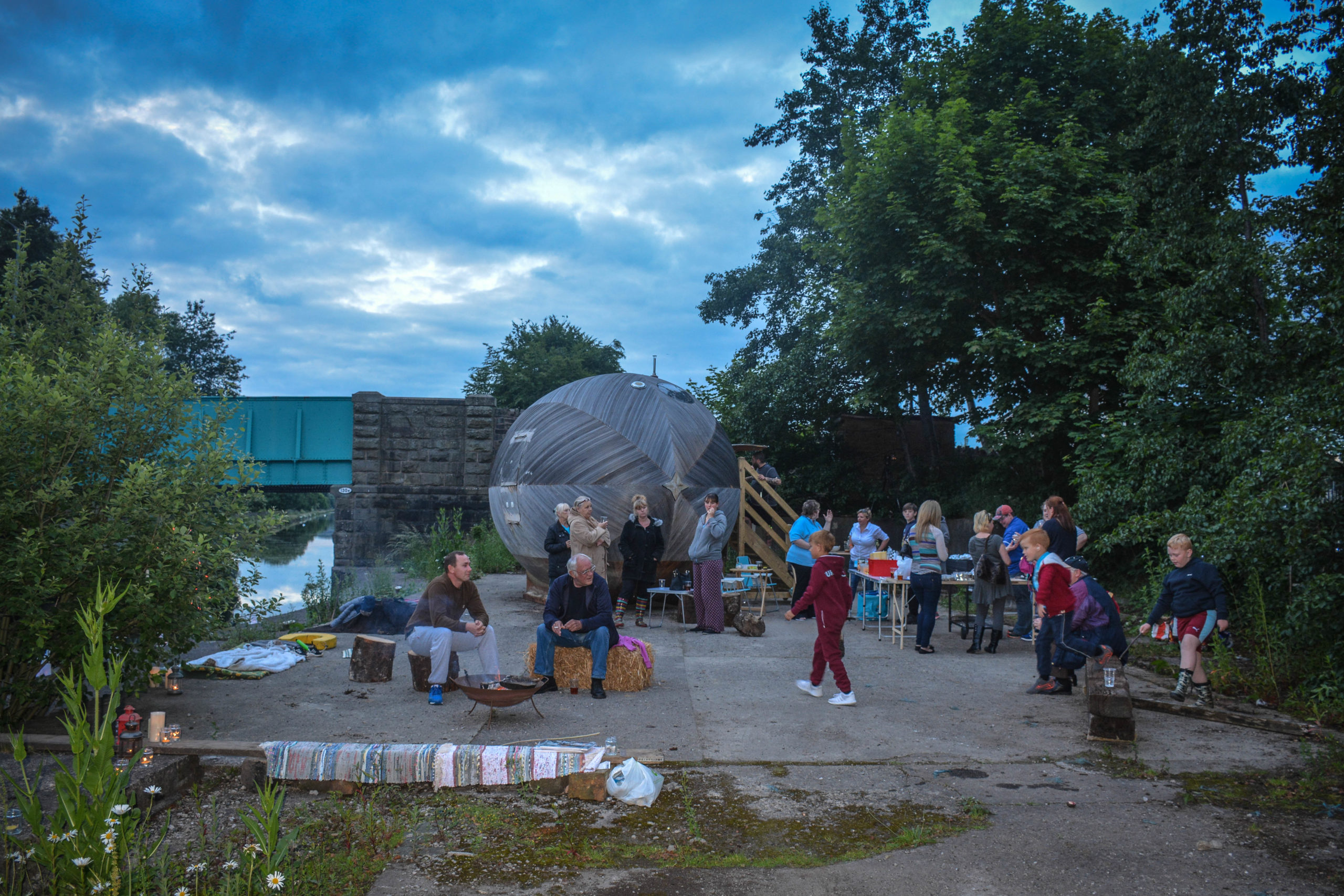
The Exbury Egg 2016, Burnley. With artist Stephen Turner
Photographer Sam Walsh
Super Slow Way don’t think so. Of course, the organisation strives through its curation and commissions, its programming and co-productions, to achieve high levels of artistic excellence and, refreshingly, it’s unashamed of often employing and celebrating contemporary artists and community artists from outside of its Pennine Lancashire area as much as it does those from in and around it. But the Super Slow Way team are also passionately aware of the power of art to regenerate towns and villages and open spaces, to make the not-immediately noticeable and the no-longer visible prominent again, and to raise the profile of an area – its people, its places; its art and its artists. This is not about gentrification, however, nor is it all about chasing audience numbers and participant data. The team are focused on their communities and community members which are often divided and segregated within each town, each village. They see communities riven apart by industrial decline and disinvestment: proud pasts in mills and canals long gone.
And now Coronavirus is further widening class divides. Yet it is simultaneously reigniting cooperation and creativity in the home. And home is where we start from.3 The communities in the Super Slow Way area will need help to rebuild. Art can and must shift in emphasis to address people’s losses as well as their hopes and fears. Creativity is an important way of healing us by bringing us together. I will not expand upon the massive task facing arts and culture in the wake of this terrible pandemic, but it is important to consider that what comes next will need to reconnect to people.4
Super Slow Way understands that both high quality art and grassroots community art can attract attention. It understands that, in both cases, art can be a powerful way of supporting community development – of helping people in communities begin to think about how they can make things better by getting the things done in their communities that can make a difference and make things better. The organisation uses existing spaces – old mills, church crypts, empty shops, busy high streets, corners of parks, unloved wharfs, overgrown canal paths, Victorian gas holders, wherever – as unexpected places where artists make art happen, where people share experiences, and where new relationships flourish. This is not about making do and mending, but it is about the tactics of making do as a creative practice of everyday life. It’s not magical. It’s about understanding that Creative People and Places funding can be used to produce art that can kickstart community development. Super Slow Way are clear that they are not interested in audience development as an outcome in and of itself. Rather, the team know that art can support people to begin the process of rebuilding their communities by stimulating new conversations and new ideas, by helping community groups strengthen their offers, by offering local artists and arts organisations new opportunities to work within their communities, and by raising the profile of the people and places – past, present and future.

the team know that art can support people to begin the process of rebuilding their communities by stimulating new conversations and new ideas
Nevertheless, Super Slow Way are proud to adopt an unashamedly curatorial approach to art and community development. Whilst this may seem at odds with ideas about cultural democracy and co-production, it is often the case that community development needs to begin with leadership. Super Slow Way offers a visionary form of leadership that is both strong and supportive when it needs to be. It knows that community development takes time; that there are many human obstacles – traditional community gatekeepers such as some councils and councillors, arts organisations and artists, third sector groups and self-appointed spokespeople for communities – who are often reluctant to cede power. It also understands that placemaking is a much-overused term that has little to do with community development or with high quality artistic programming. Placemaking is about facades and economics and new communities. It does not arise from a deep-rooted desire for social justice and social change.
The Super Slow Way team are not satisfied by the shallow gloss of placemaking. They are angry about inequities at local, regional and national levels; concerned about how arts funding is distributed and to whom; indignant about inequalities - particularly class inequality and racial inequality. They see art as part of a necessary shift in attitudes: a means to support significant social change. They understand that they are, like all UK arts organisations in receipt of public funding, privileged and want to use that privilege to make changes in their area – changes that can, through the power of art and thoughtful curation, lead the way in showing how art can be a positive way of demonstrating how people can use their creativity to make real changes locally, regionally, nationally, and maybe even internationally.
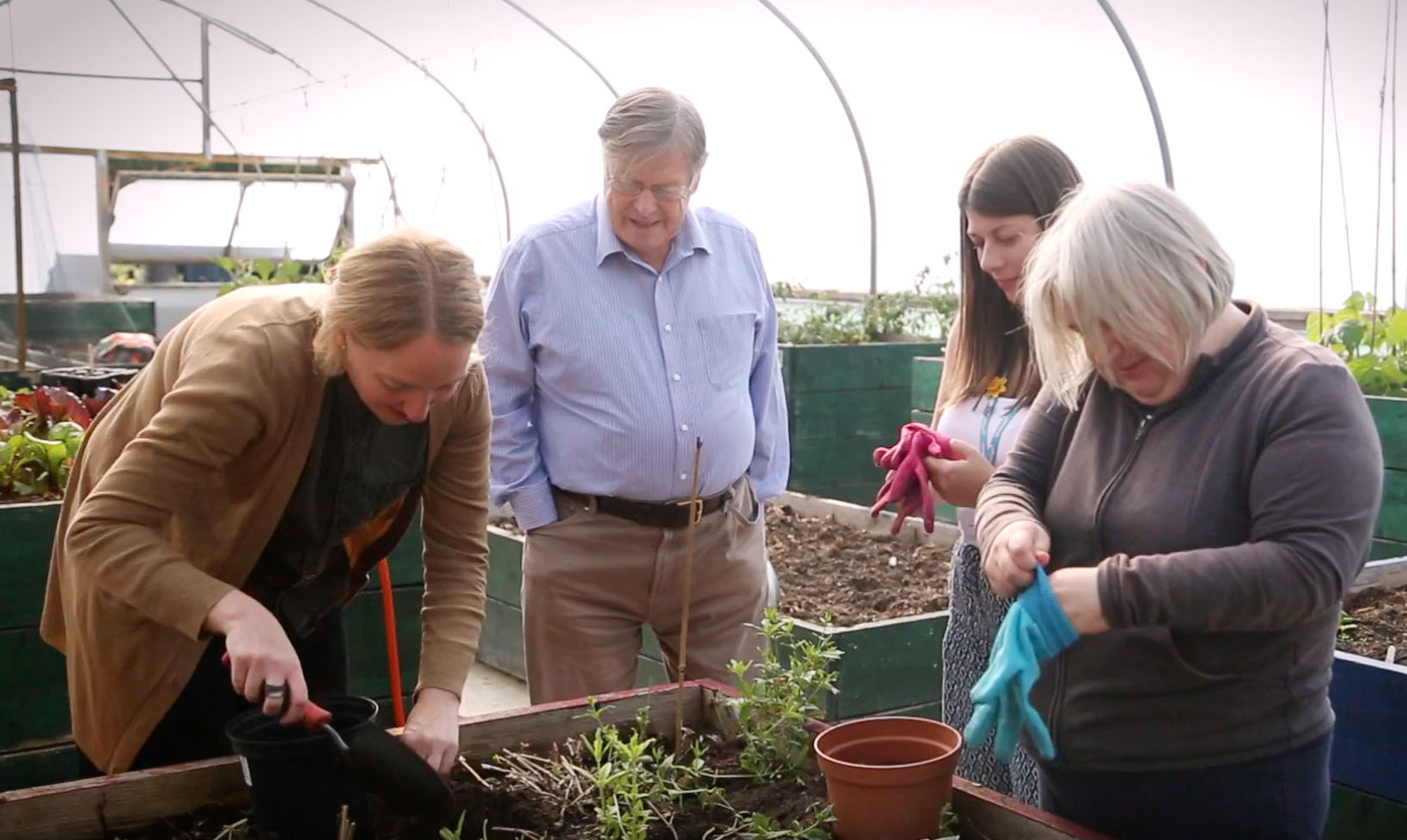
Local Colour 2016 - ongoing, Hyndburn. With artist Claire Wellesley Smith and partners Community Solutions.
Photographer Steph Heap
Super Slow Way is also interested in public space; about how places and spaces that are designated as “public” (and this is a more complex issue than it may seem) function and who, if anyone, uses them; and about whether existing spaces and places can be used, and perhaps even repurposed, by art and artists in ways that can benefit communities. This is an interesting proposition. It is not about placemaking. Rather, it is about art as a tool in the ongoing process of the social production and reproduction of space. It’s about space-making. It’s also about what I term place-guarding.5
The work of Super Slow Way positions art within the social production of space. It understands art as something that’s always socially produced. Art is, as sociologist and art historian Janet Wolff wrote, a social product.6 Art must therefore be considered in terms of its relationships with and role in social structures. Art is part of our social structures and art is part of our everyday lives. Art is also one form of cultural practice amongst many. And culture (or, more accurately, our cultures) is a social product.7 Culture is what makes us human, and it is not only a vital way to enrich our social lives, but it can also be an essential driver of social change with the capacity to transform civil society.8
Once art and culture are understood as social products – that artistic and cultural production exist in and help generate socially produced space, it is possible to understand their relationships to urban (and rural) environments and thereby to Henri Lefebvre’s notion of the social production of space. Lefebvre is perhaps one of the most prolific urban thinkers of the last one hundred years. He argues that space is not a “thing” or a “container” but product and a means of production. Social space is produced by human relationships and forms of human production. It encompasses “everything that is produced either by nature or by society” including “living beings, things, objects, works, signs and symbols”.9 Obviously, art and cultural practices play a significant part of these relationships and forms.
Why is this important? Because thinking about people, their relationships with and production of social space, and, more specifically, the ways that art and culture produce and are products of socially produced space, can offer organisations like Super Slow Way and the Creative People and Places initiative new ways of thinking about what they do and what they produce – what the outcomes are or might be. Arts Council England’s new ten-year strategy, Let’s Create, acknowledges that partnerships like Creative People and Places can lead to “greater civic and social benefits” but it does this from a “place-based” perspective that leans towards “objects” and “things”.10 What will become of the softly radical intentions expressed within Let’s Create in the aftermath of Coronavirus? Perhaps Creative People and Places can become more pointedly focused on social action, social justice and community development?
Thinking about the cultural production of social space or culturally produced space also offers a way to escape the (too often unexplored) limitations of the practice of socially engaged art. To “engage” is to become interested by or take part in something or to become employed or, militarily, to attack.11 This is often distilled into other interchangeably used terms like social art practice or simply social art. However, social art practice does not appear to understand how deeply it is rooted in the social production of space. Instead it situates itself in social engagement and, by doing so, it misses the opportunities that can open by thinking about space as both socially produced and a social product. For example, a recent Creative People and Places case study featuring Super Slow Way described social art practice as an “art medium” (a thing) that “focuses on social engagement” by “inviting collaboration with individuals, communities, and institutions in the creation of participatory art” for the primary purpose of benefiting “a local area or society”.12 But focusing on engagement with art as a way of producing place-based or social benefits misses the nuanced nature of how organisations like Super Slow Way use artistic and cultural production as a means of producing social space – how it produces social relationships not outcomes.
It is easy to measure outcomes and numbers of people “engaged” in arts and cultural activities and report these “things” as indicators, but this approach does not acknowledge or fully understand the importance of the human relationships and intangible or secondary benefits that Super Slow Way and many other Creative People and Places projects produce. So, while it is obvious that Super Slow Way’s sharp curatorial eye usually ensures an aesthetically strong artistic programme and its thoughtful engagement strategies often produce impressive audience and participant statistics, it is in the fine detail of its work where it can be seen to be positively contributing to the social production of space. It is in the seemingly “little” human relationships and forms– in the new relationships and possibilities and small-scale (but really important) investments made with partners –where Super Slow Way produces social space. The aesthetics and artistic impact are essential, because this is what attracts attention and generates a sense of wonder, but so are the little acts and forms that the organisation’s cultural production of positive social spaces create. Because it is in these culturally produced social spaces where community development happens, where the practices of everyday life take place.
As Chrissie Tiller points out, the community art movement has a long relationship with community development.13 My own practice is formed around the belief that the primary purpose of community art is to create the conditions for community development through self-governance and increased self-reliance. Community art produces positive social spaces based upon cooperation and trust. The practice is often unfairly misinterpreted, but it’s important to understand that its roots were never intentionally in supporting state agendas or in participation as an outcome in and of itself. Community art is also rooted in contemporary art and, whilst it is a practice in itself, it can and does adopt many different forms. It is about artists helping communities to develop, but it is never social work.14 And, because community art is, to a large extent, about community development – not audience development, it can sustain and regenerate common spaces: the commons.15 People will crave for common spaces after month upon month of lockdown.
Super Slow Way is exploring notions of the commons in much of the work it does alongside the stretch of the Leeds and Liverpool canal that flows through the programme area and from which its name is derived. When the organisation talks, as it does on its homepage, about how its “radical and ambitious” arts interventions alongside the canal are intended to act as “a vehicle for bringing communities together” to create shared spaces in which “creativity, strength and connectedness across and within communities” can develop, it is talking about community development and the commons.16 The team may not have always been explicit in communicating this message, perhaps caught up in the terminologies of socially engaged art, but what is emerging is a sense that Super Slow Way’s core vision is about art’s role in facilitating community development, about the cultural production of positive social spaces, and about reinstating common land.

what is emerging is a sense that Super Slow Way’s core vision is about art’s role in facilitating community development, about the cultural production of positive social spaces, and about reinstating common land.
The team has been planning a “linear park” for several years now as a key legacy of its programme. It will soon become a reality. The linear park has been described, somewhat dryly, as a “place-making initiative”: a “major programme of physical and cultural regeneration” that might “develop the canal as a commercial and leisure resource and public space”.17 The park will begin in Blackburn and end in Pendle. It is understandably now a key element of Lancashire’s current Cultural Strategy as a medium-term “culture-led regeneration project” that will hopefully become not only “a major new cultural attraction for the north of England” but a catalyst for “housing renewal, improved transport infrastructure, and … environmental and social improvements”.18 Nevertheless, Super Slow Way recognises the value of the potential for the park to become a “new commons” as well as an enabler of more traditional forms of regeneration. I wonder whether the Canal & River Trust, recently rebranded as a health and wellbeing charity who host Super Slow Way and has stewardship of the country's canals and towpaths, including the Leeds & Liverpool Canal, following the denationalisation of the English and Welsh canal network, can find new and imaginative ways of returning these valuable green spaces to common ownership, to become useful vehicles for the wellbeing of the often impoverished communities along their banks?
Other projects, like Local Colour in Accrington have given a real sense of ownership to local people who are using their shared knowledge and experiences to begin thinking about developing a new heritage site: Mr. Gatty’s Experiment Shed. They are also becoming more involved in other heritage activities around the area. Artist Claire Wellesley-Smith has spent almost four years working with the community around Gatty Park in what I would describe as a traditional community art project. She has sewn little seeds in the community, and they are beginning to grow. Some might become self-sufficient, thanks to a relatively small financial investment from Super Slow Way and the gentle skills of an experienced community artist.
And Super Slow Way’s programming also leads to unexpected benefits for partners. Its 2019 British Textile Biennial did not only engage new audiences and receive significant national media attention, with all the accompanying positive benefits these things bring. It also managed to help other community organisations become more self-sufficient. Take the Adidas exhibition at Blackburn’s Cotton Exchange. The building is immensely important to the town and has a deeply rich heritage. It is in the process of being restored by a charity called Re:Source. In order to host the exhibition, the building needed new access ramps, toilet facilities, improved health and safety. Adidas paid for some of these. The investment will enable Re:Source to use the venue for more events, thereby generating more much-needed revenue. Of course, this will also enable new social spaces to be created, as well as regeneration.
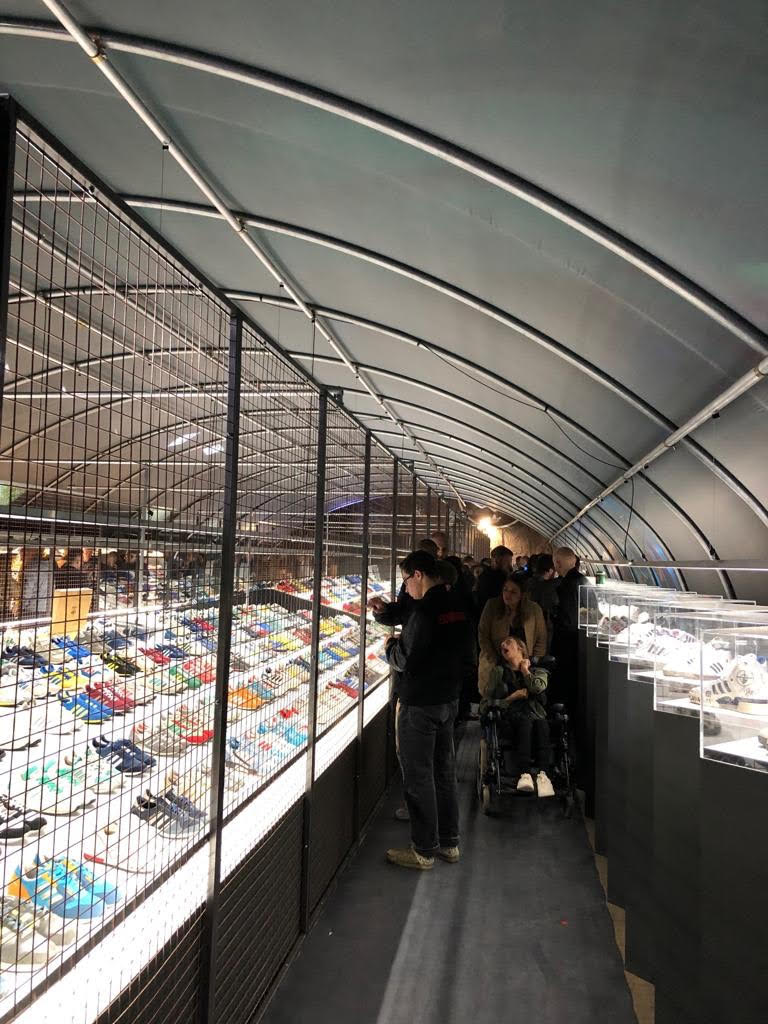
Adidas Spezial Exhbition, 2019 Blackburn as part of British Textile Biennial.
Photographer Richard Tymon
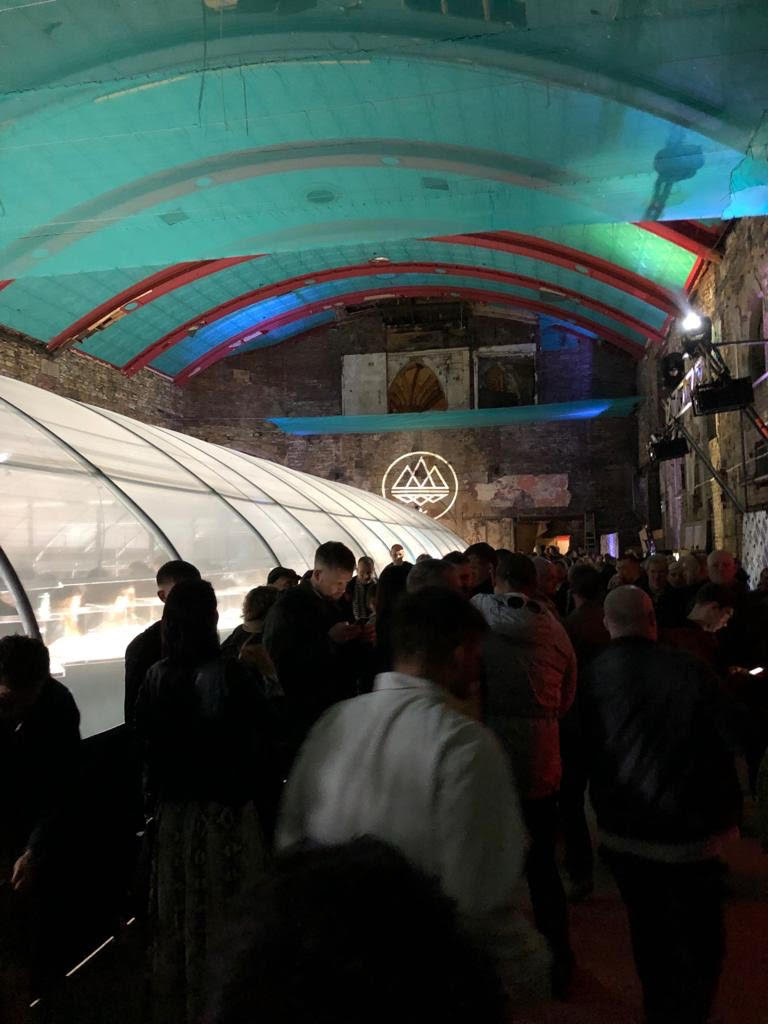
Adidas Spezial Exhbition, 2019 Blackburn as part of British Textile Biennial.
Photographer Richard Tymon
Super Slow Way is committed to paying partners like charities, smaller arts organisations, community spaces, etc. a fair rent to use their spaces for its programming. Its programming produces positive, tangible benefits for partners and community organisations for little to no direct expenditure. This is not about capital expenditure and not simply about making do with existing places. Super Slow Way produces spatial interventions that use what’s already there but also add something that is often mutually beneficial. This approach is about much more than making do. It is about community development: about art contributing to community development.
Imagine if this happened in every area? Imagine if those involved in arts and culture really thought about how our work benefited others in our communities? The Super Slow Way team are committed to working in ways that are based upon a deep sense of wanting to challenge injustice. They are proud of the work they’ve done outside the bland white walls of ten-a-penny contemporary arts centres. They understand that art can promote social justice and social change without being dumbed down or compromised. They are critical of many big capital arts projects and wonder why huge sums of money are spent on them, whilst relatively small amounts of funding go to a carefully selected number of Creative People and Places projects in some areas of the country. They are interested in becoming more culturally democratic. Surely now is a time when we need art programmes that support social change, call for social justice and embrace cultural democracy as a radically transformative creative practice?

why there isn’t a Creative People and Places (or perhaps Creative People and Spaces) programme in area village, town and city across the country,
I have written critically of Creative People and Places many times before, but my time as Critical Friend for Super Slow Way has made me realise that programmes like this (and different from this) offer the possibility of community development through the cultural production of positive social space. This has led me to wonder why there isn’t a Creative People and Places (or perhaps Creative People and Spaces) programme in area village, town and city across the country, and why Arts Council England doesn’t connect this initiative to community development instead of audience development. Isn’t it time that we redistributed arts and cultural investment in ways that, for the first time in history, perhaps, erode the upper- and middle-class grip on our arts and cultures? Labour’s ex-Shadow Cultural Minister, Tracy Brabin, recently called for just such a roll-out of Creative People and Places.19 I echo her call but would add that Creative People and Places needs to encourage projects to become social action projects, instead of often rather anodyne “action research” projects, because this is a crucial way in which arts and culture can begin to support the rebuilding and redevelopment of our communities after COVID-19.

Super Slow Way uses art and culture to produce positive social spaces in and between places and in and between people and in and between times.
Perhaps Arts Council England’s new ten-year strategy Let’s Create will learn from Creative People and Places programmes like Super Slow Way and invest in arts and cultural activities linked to community development and community organising across the country? The investment is small, but the returns are great.
Super Slow Way uses art and culture to produce positive social spaces in and between places and in and between people and in and between times. This, in turn, produces new forms of social imaginations and social landscapes in which community development can (and does) take place. Super Slow Way’s approach is to up-end ideas about marginal people and places being somehow lacking and deficient by opening-up creative opportunities in the gaps that constantly emerge in the rhythms of everyday life. Its approach is therefore strategic and tactical. It is about the art of making do as a way of not just making do but striving for better art and more socially just ways of living together, and it is about the art of being in between. Super Slow Way produces big social spaces and small social spaces, but it knows these practices always take time, and it knows that means being slow. Maybe we all need to rediscover how important it is to be slow?
1 https://www.creativepeopleplaces.org.uk
2 https://www.creativepeopleplaces.org.uk/content/our-aims
3 https://colouringinculture.org/blog/homeiswherewestartfrom
4 François Matarasso has recently addressed this in What are we saving, and why? See https://parliamentofdreams.com/2020/04/05/what-are-we-saving-and-why/
5 For more about place-guarding, see http://colouringinculture.org/blog/placeguarding
6 Wolff, J., 1993 [1981]. The Social Production of Art. Second ed. Basingstoke and London: The Macmillan Press.
7 Williams, R., 1977. Marxism and Literature. Oxford: Oxford University Press.
8 Eagleton, T., 2016. Culture. Newhaven and London: Yale University Press.
9 Lefebvre, H., 1991 [1974]. The Production of Space. Malden, MA: Blackwell.
10 Arts Council England, 2020. Let’s Create: Strategy 2020-2030. London: Arts Council England.
11 https://dictionary.cambridge.org/dictionary/english/engage
12 Ecorys, 2017. Talent Development for Socially Engaged Practice. London: Arts Council England.
13 Tiller, C., 2013. Participatory Arts and Community Development: Taking Part. In M. Mayo, Z. Mendiwelso-Bendek& C. Packham (Eds.), Community Research for Community Development. London: Palgrave Macmillan.
14 For more about why art is not a replacement for social work, see http://colouringinculture.org/blog/caughtdoingsocialwork
15 Van Laerhoven, F. &Barnes, C., 2014.Communities and commons: the role of community development support in sustaining the commons.Community Development Journal, Volume 49, Issue 1, pp. 118-32.
16 https://superslowway.org.uk/
17 Froggett, L. et al., 2018. Qualitative Evaluation of the Super Slow Way Programme 2015-2017. Preston: University of Central Lancashire.
18 Fleming, T., 2019. Re-made: A Cultural Strategy for Lancashire. Preston: Lancashire Enterprise Partnership.
19 https://drive.google.com/file/d/12TGW7L0-fvwNHUVx4ngP3Kyx0PqlavXD/view
ARTICLES

